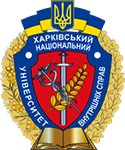The tragedy of the South-Western Front: Kyiv disaster of 1941
Abstract
One of the most terrible and difficult to understand pages of the Second World War history is the death of the Red Army South-Western Front in the second half of September 1941. An attempt has been made to answer the question why the largest group of Soviet troops (the South-Western Front), not inferior to Army Group “South” in number and having a complete advantage in tanks, aviation and artillery, was defeated in defensive battles and encircled. The largest was the “cauldron” near Kyiv. The Red Army suffered gigantic losses: 665,000 soldiers and officers, the entire material and technical base of the front ended up in the Kiev “cauldron”. After the defeat near Kyiv, the way to Eastern Ukraine, Azov and Donbas was open. Scientific analysis of the events and understanding of the causes of the Kyiv disaster of 1941, their generalized, comprehensive assessment are relevant for the study of modern military history.
There were many reasons for the tragedy of the South-Western Front. Among the main ones, the following have been highlighted: incorrect assessment of Germany’s strategic priorities at the initial stage of the war; unpreparedness for a defensive war on one’s own territory; the advantage of the enemy in the tactics of fighting; lack of coordination of actions between military branches; loss of command of troops at all levels, from the General Staff to corps and division commanders; wrong personnel policy, as a result of which unprofessional persons who met the “main” criterion, such as personal loyalty to Stalin, came to the leadership of the Red Army; gross mistakes of the command, incompetence and voluntarism in setting tasks on the part of the Headquarters of the Supreme High Command (the highest military leadership of the country), etc.
Downloads
References
Filippenko R.I., Savchenko N.M., Kudelko S.M. аnd Maliutina O.K., 2013. History of Ukraine [Istoriia Ukrainy]. Kyiv: Altera.
Patrylak I., 2017. Battles for Ukraine 1941–1942: failed of “strategic defence” [Boi za Ukrainu v 1941–1942 rr.: proval “stratehichnoi oborony”]. In: Viatrovych V., Hromenko S., Vaiorov M. et al., From Reichstag to Ivodzimi. In the half-fire war. Ukraine and Ukrainians in the Second World War [Vid Reikhstahu do Ivodzimy. U polumi viiny. Ukraina ta ukraintsi u Druhii svitovii]. Kharkiv: Klub simeinoho dozvillia. Pp. 48-60.
Krivosheev G.F. (еd.), 2011. Russia and the USSR in the wars of the twentieth century. Losses of the Armed Forces: A Statistical Study [Rossiyа i SSSR v voinakh ХХ veka. Poteri vooruzhennykh sil: statisticheskoe issledovanie]. Moscow: Olma-Press.
Bykov K., 2008. The greatest catastrophe “Kyiv cauldron” [Velichaishaya katastrofa “Kievskii kotel”]. Moscow: Yauza; Eksmo.
Vasserman A.A., 2012. Skeletons on the History Shelf [Skelety v shkafu istorii]. Moscow: AST; Astrel.
Baryatinskii M.B., 2009. Great Tank War 1939–1945 [Velikaya tankovaya voina 1939–1945]. Moscow: Eksmo.
Andronikov G. (еd.), 1975. History of the Second World War 1939–1945 [Istoriya Vtoroi Mirovoi voiny 1939–1945 gg.]: in 12 vols. Vol. 4. Moscow: Voenizdat.
Pototskyi V.P., 2010. Battles for the Ukrainian Lands [Bytvy za ukrayinski zemli]. Kharkiv: Shkola.
Vokhmyanin V.K. and Podoprigora A.I., 2008. Kharkiv, 1941: Near the edge of the storm. Part 1 [Khar’kov, 1941-i: U kraya grozi. Chast’ 1]. Kharkov: Raider.
Isaev A., 2005. Salient 1941. History of GPW, which we did not know [Kotly 1941-go. Istoriya VOV, kotoruyu my ne znali]. Moscow: Yauza; Eksmo.
Moshchanskii I.B., 2008. 1941. The Battle of Kyiv [1941. Bitva za Kiev]. Moscow: Yauza; Eksmo.
Kreshchanov A., Kuzyak A. and Osipov A., 2002. Defense of Kyiv [Oborona Kieva]. Kiev: Arkhiv-Press.
Runov V., 2010. Hitler’s victory parade. The truth about the massacre of Uman [Pobednyi parad Gitlera. Pravda ob Umanskom poboishche]. Moscow: Yauza; Eksmo.
Copyright (c) 2022 O. K. Maliutina, K. Z. Maliutin

This work is licensed under a Creative Commons Attribution 4.0 International License.



